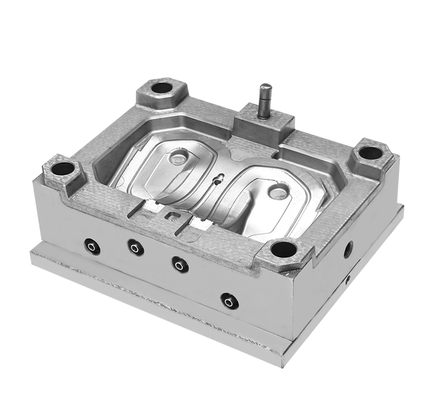Auto Lamp Mould design forms a foundation for producing consistent and durable automotive lighting components. While the final lamp is what drivers see, the mould dictates the structure and performance long before the part is installed on a vehicle. Engineers who develop these moulds devote significant attention to details that influence strength, transparency, and assembly compatibility. Their work supports a manufacturing environment where efficiency and reliability are core priorities.
The beginning of any Auto Lamp Mould project involves analyzing the lamp’s geometry. Vehicle lighting has become increasingly complex, incorporating sharp angles, smooth transitions, and stylized contours. The mould must reproduce these shapes accurately, requiring detailed modelling and thorough evaluation. A precise match ensures that the lens and housing fit securely when assembled, reducing the chance of gaps or misalignment.
Cooling management is a crucial aspect of mould performance. Automotive lamps often use materials such as polycarbonate, which demand consistent cooling to achieve a stable structure. Engineers integrate channels within the mould that distribute temperature evenly, preventing distortions that could weaken the lamp or affect optical clarity. Proper cooling also supports smoother surfaces, allowing light to pass through the lens with fewer obstructions.
The gating system, which controls how molten material enters the mould, must be designed to reduce internal stress. Poor flow can create marks or incomplete areas. A well-planned gating layout helps the material fill the cavity efficiently, supporting structural stability and minimizing post-production finishing. Since vehicle lamps often have visible surfaces, maintaining a clean appearance is essential.
Structural support areas within an Auto Lamp Mould must also be reinforced. These regions handle repeated pressure during the injection process. Using strong steel grades and thoughtful support geometry ensures that the mould can withstand long-term operation. This durability provides consistent parts and reduces interruptions in production lines.
Another focus is optical quality. Automotive lamps rely on precise surfaces that guide or scatter light in specific ways. Any imperfection in the mould surface will transfer directly to the plastic component. Therefore, polishing and texturing are handled with great care. Fine polishing enhances clarity, while controlled textures help manage reflection or diffusion. These details influence both safety and aesthetics.
Auto Lamp Mould designs must incorporate more intricate features. Designers adjust venting, parting lines, and ejection systems to support these modern shapes. Their adjustments enable consistent production even when dealing with complex geometries.
Ultimately, an Auto Lamp Mould is more than a tool; it represents a blend of engineering, material science, and craftsmanship. Its reliability ensures that each lamp produced meets functional and visual expectations, supporting safe driving and appealing vehicle design.



